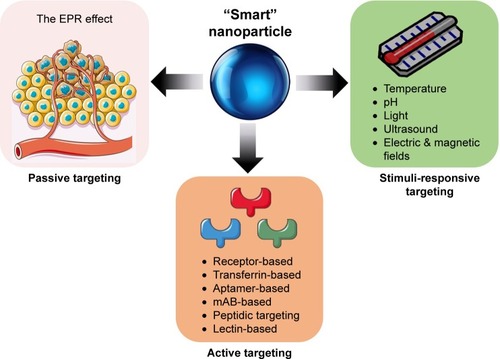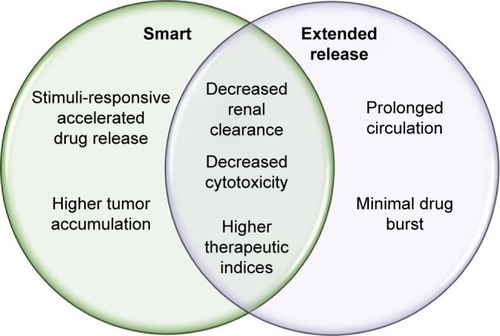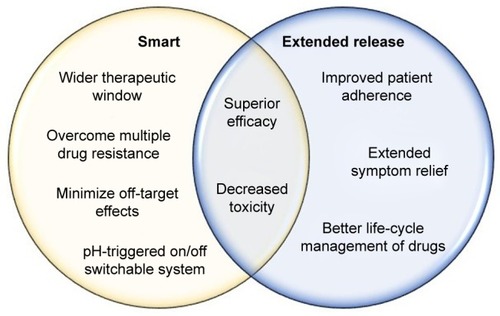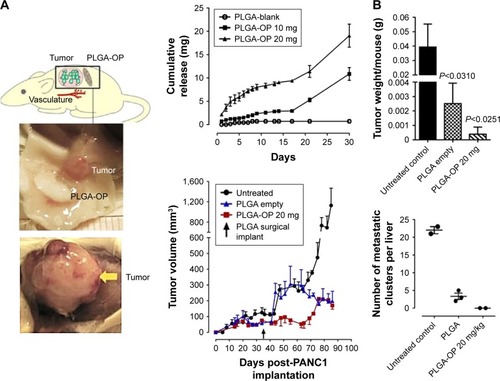Figures & data
Figure 1 Multifunctional targeting employed by “smart” nanoparticles.
Note: Smart nanoparticles employ passive- targeting, active- targeting, and stimuli-responsive targeting methods.
Abbreviations: EPR, enhanced permeability and retention; mAb, monoclonal antibody.

Table 1 Active targeting strategies and potential functionalization of “smart” nanoparticles
Figure 2 Physiological benefits of “smart” and extended-release nanopolymers.
Note: Smart and extended-release nanopolymers each confer physiological benefits, with some being characteristic of both nanoparticle types.

Table 2 Current US FDA-approved nanoparticles and type of targeting employed, indications, advantages, and drawbacks
Figure 3 A pH-responsive, “smart” active polymer-delivery system.
Notes: Yellow spheres represent folic acid molecules, green represents hydrophobic drugs, blue shows the hydrophilic part of the polymer, and gray is the hydrophobic part of the polymer. Reprinted from Biophys Chem, 214–215, Li X, Mctaggart M, Malardier-Jugroot C, Synthesis and characterization of a pH responsive folic acid functionalized polymeric drug delivery system, 17–26, copyright 2016, with permission from Elsevier.Citation18

Figure 4 Clinical benefits of “smart” and extended-release NPs.
Note: Smart and extended-release nanopolymers each confer clinical benefits, with some being characteristic of both nanoparticle types.

Table 3 Classical methods of extended-release delivery systems and their limitations
Figure 5 (A) RAGxCγ double-mutant mice bearing heterotopic xenografts of pancreatic PANC1 tumors. (B) Extended release of OP from PLGA-OP surgical implants, measurement of tumor volumes days post implantation, tumor weights at necropsy, and number of liver metastatic clusters.
Note: Copyright © 2015. Dove Medical Press. Reproduced from Hrynyk M, Ellis JP, Haxho F, et al. Therapeutic designed poly (lactic-co-glycolic acid) cylindrical oseltamivir phosphate-loaded implants impede tumor neovascularization, growth and metastasis in mouse model of human pancreatic carcinoma. Drug Des Devel Ther. 2015;9: 4573–4586.Citation182
Abbreviations: OP, oseltamivir phosphate; PLGA, poly(lactic-co-glycolic acid).

